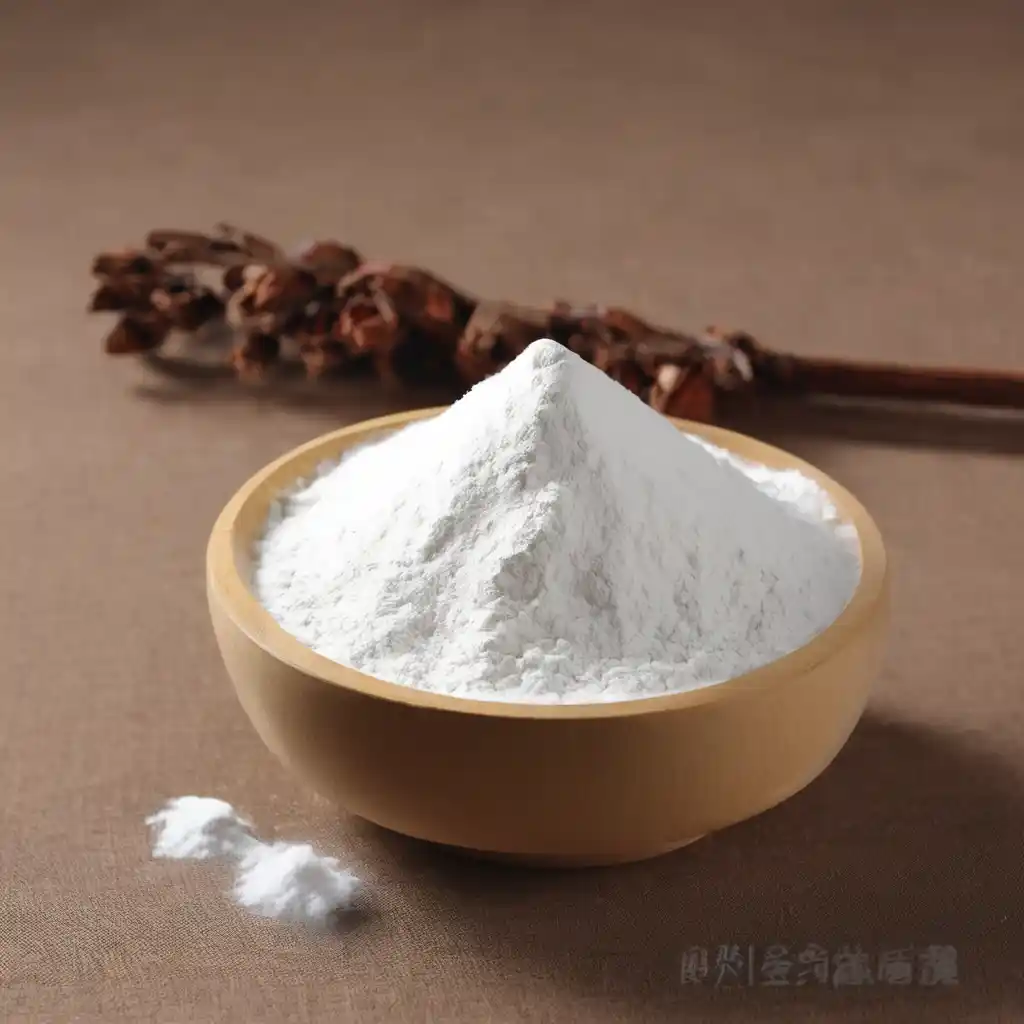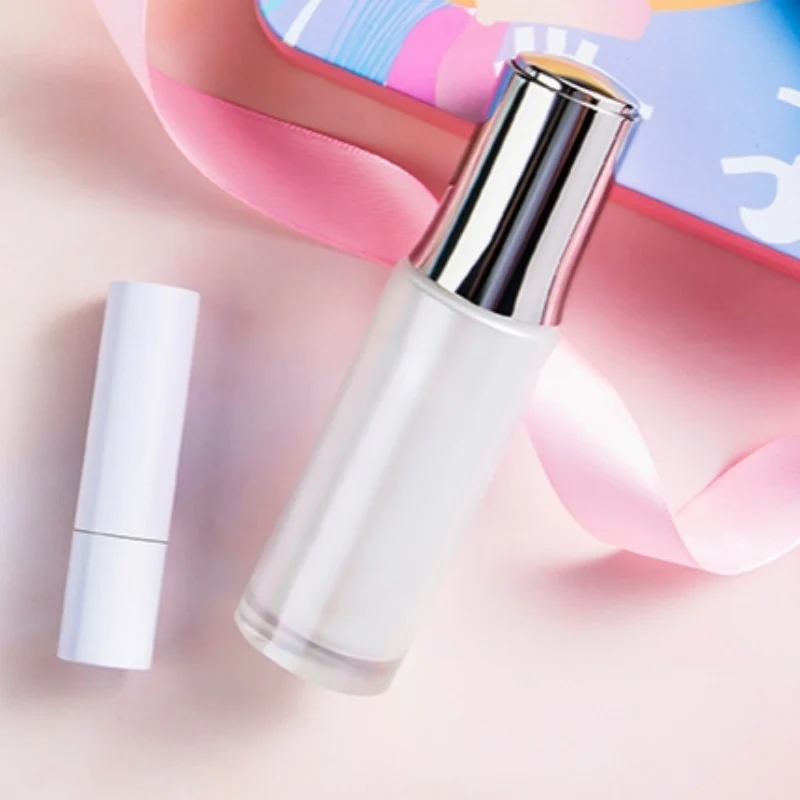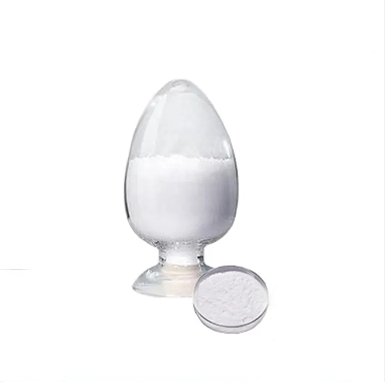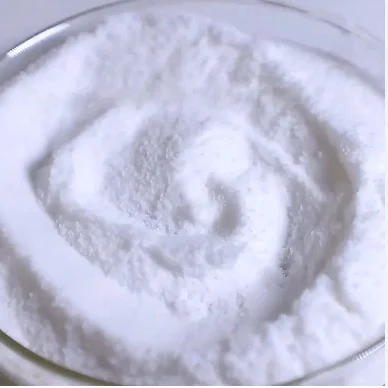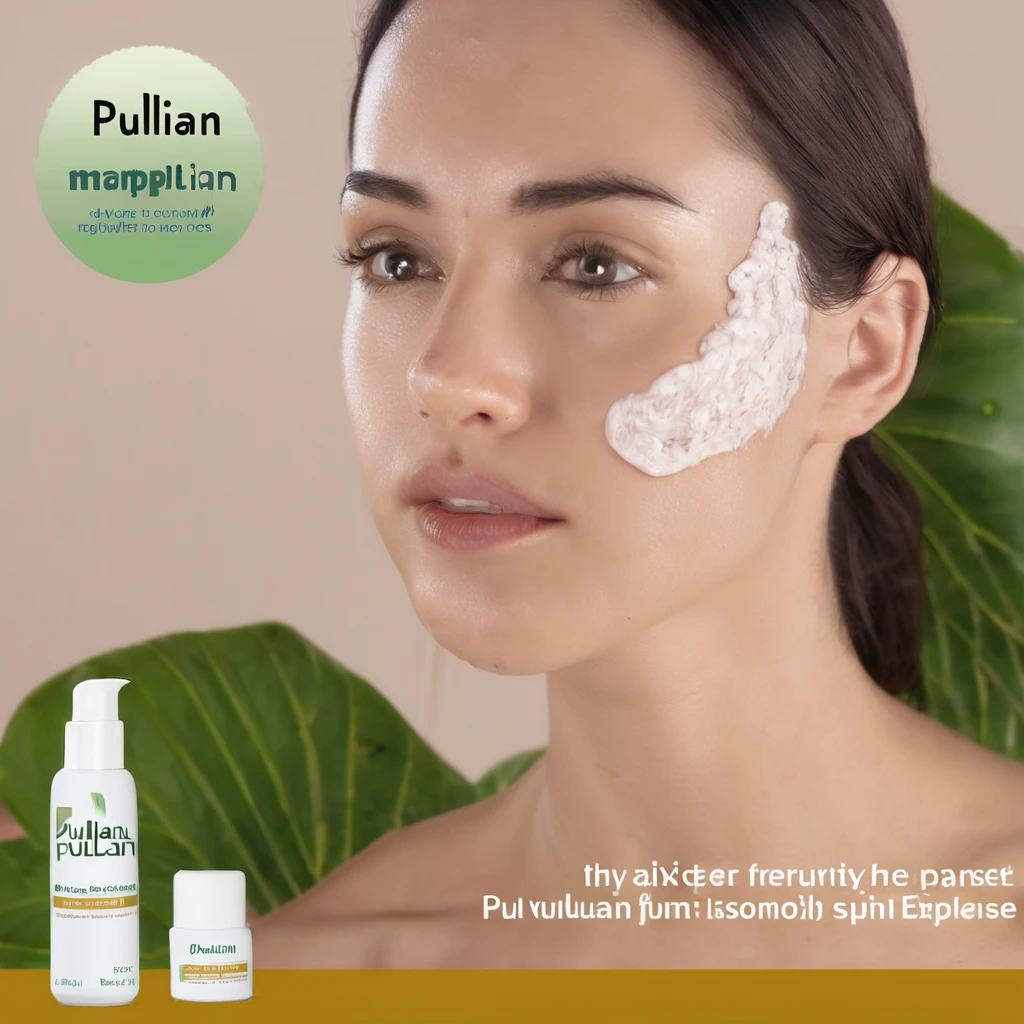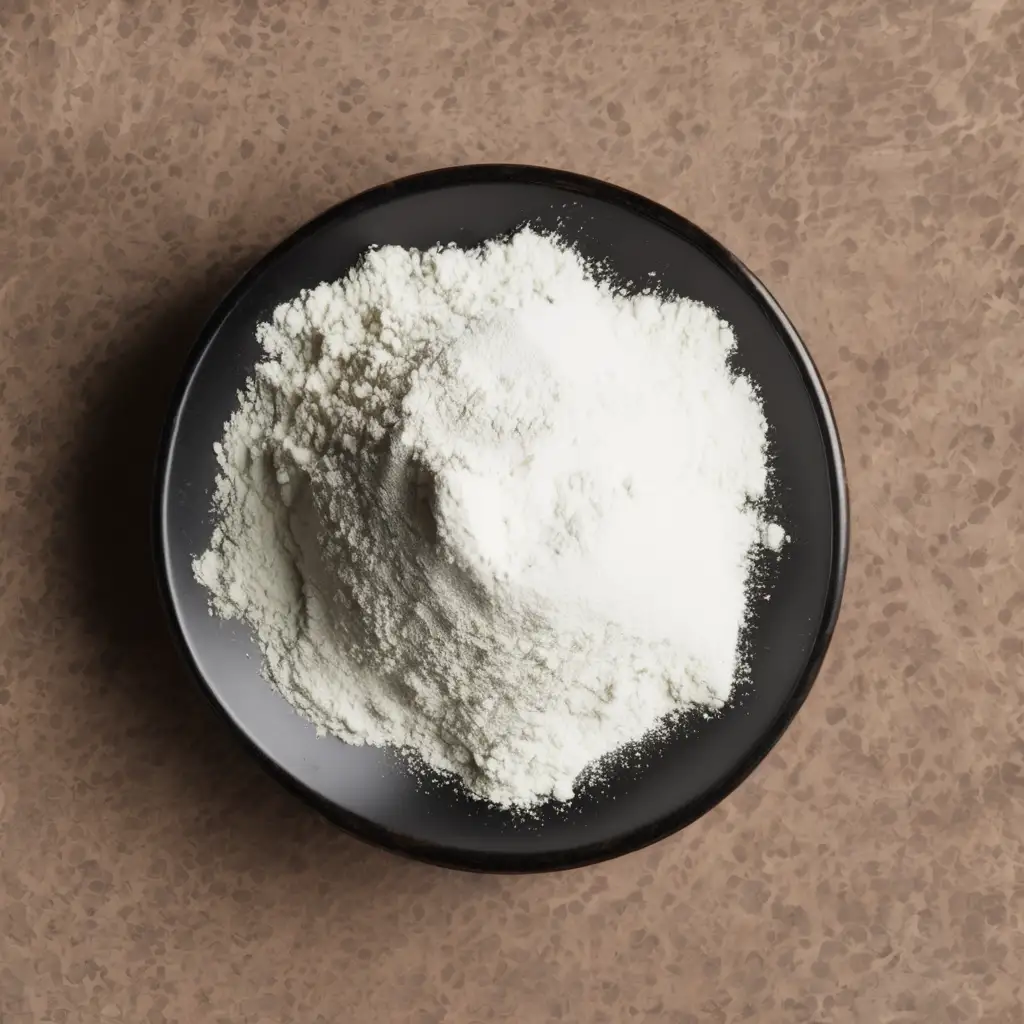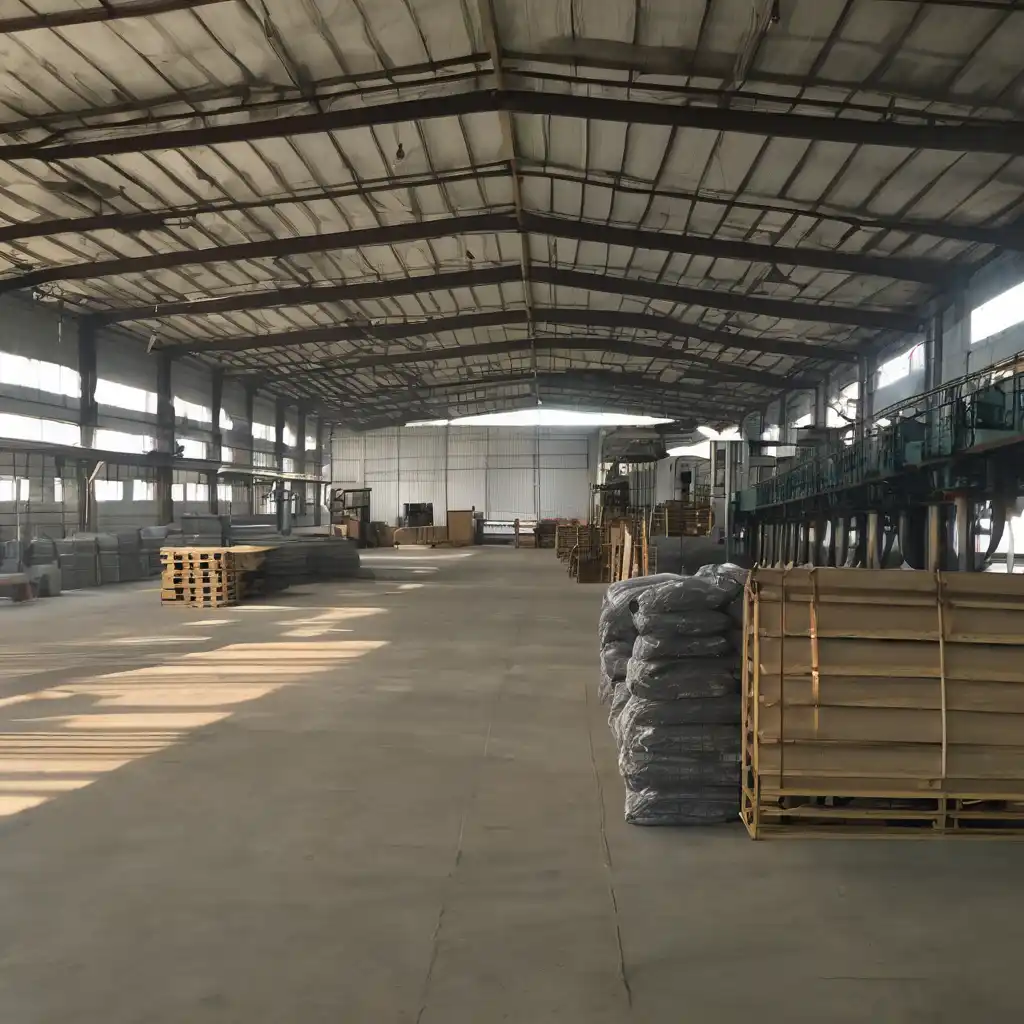Food Rich in Pullulan: An Exploration of Sources and Benefits
Pullulan is a polysaccharide polymer consisting of maltotriose units, and it is a fascinating compound with significant potential in the food industry. This water-soluble polymer, produced by the fungus Aureobasidium pullulans, boasts unique properties that make it valuable as a food additive. These properties include film-forming ability, non-toxicity, biodegradability, and resistance to oxygen permeability. As a result, pullulan is extensively used in the production of edible films and coatings, enhancing the shelf life and safety of various food products. This article delves into foods rich in pullulan, exploring their sources, nutritional benefits, and applications.
Natural Sources of Pullulan
Pullulan itself is not commonly found in natural foods. Instead, it is typically produced through microbial fermentation. However, there are several food products and dietary supplements where pullulan is used as an ingredient due to its beneficial properties.
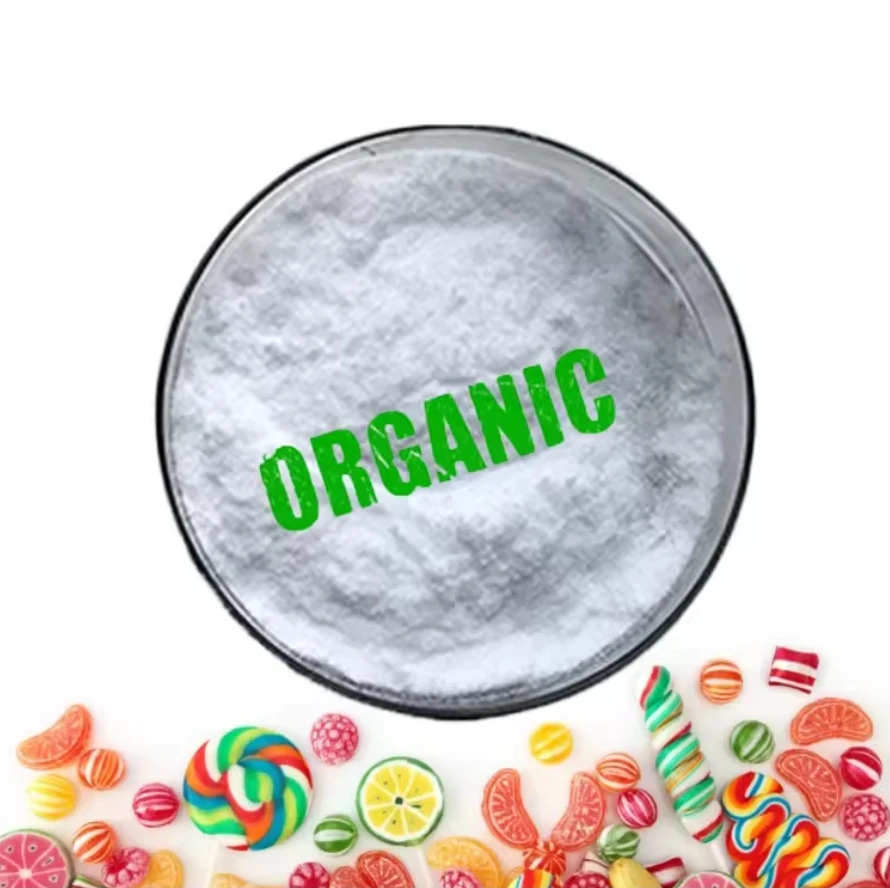
Edible Films and Coatings
One of the most notable applications of pullulan is in the creation of edible films and coatings. These films are used to protect fruits, vegetables, meats, and confectioneries. The pullulan coating helps in extending the shelf life of these foods by providing a barrier to moisture and oxygen, which are primary contributors to food spoilage. For example:
Fruits and Vegetables: Apples, cucumbers, and bell peppers often come with a pullulan-based coating to maintain freshness.
Meat Products: Pullulan films are used to coat meat products to prevent oxidation and moisture loss.
Confectionery Items: Candies and chocolates may be coated with pullulan to prevent them from sticking together and to protect them from environmental factors.
Dietary Supplements and Capsules
Pullulan is extensively used in the pharmaceutical and nutraceutical industries for encapsulating dietary supplements. Its non-toxic and biodegradable nature makes it an excellent alternative to traditional gelatin capsules. For instance:
Vitamin and Mineral Supplements: Pullulan capsules are often used to encase multivitamins and minerals.
Herbal Supplements: Many herbal extracts, such as turmeric and echinacea, are delivered in pullulan capsules.
Functional Foods and Beverages
In addition to coatings and capsules, pullulan is also incorporated into various functional foods and beverages. These products are designed to provide health benefits beyond basic nutrition. Examples include:
Probiotic Drinks: Pullulan can be added to probiotic drinks to enhance their stability and shelf life.
Health Bars: Some health and energy bars use pullulan to improve texture and extend freshness.
Nutritional and Health Benefits of Pullulan
The inclusion of pullulan in food products is not merely for preservation and aesthetics; it also offers several nutritional and health benefits.
Low-Calorie Content
Pullulan is low in calories, making it an attractive ingredient for those looking to manage their weight. It can be used as a bulking agent in low-calorie foods without significantly increasing the caloric content.
Prebiotic Properties
Pullulan acts as a prebiotic, promoting the growth of beneficial gut bacteria. This can lead to improved digestive health and enhanced immune function. By supporting a healthy gut microbiome, pullulan helps in maintaining overall well-being.
Blood Sugar Management
Studies have indicated that pullulan has a low glycemic index, meaning it does not cause rapid spikes in blood sugar levels. This property is particularly beneficial for individuals with diabetes or those aiming to manage their blood sugar levels.
Applications of Pullulan in Food Industry
The unique properties of pullulan have led to its widespread adoption in various segments of the food industry. Here are some notable applications:
Edible Packaging
With increasing concerns about environmental sustainability, pullulan-based edible packaging is gaining traction. These packaging materials are not only biodegradable but also safe for consumption, reducing the reliance on plastic packaging. Edible packaging can be used for a wide range of products, including:
Snack Foods: Pullulan films can wrap snacks like chips and nuts.
Single-Serve Portions: Dairy products and condiments can be packaged in pullulan films, which dissolve upon contact with liquid.
Stabilizing Agent
Pullulan is an excellent stabilizing agent, preventing the separation of ingredients in food products. It is used in:
Dairy Products: Yogurts and creams benefit from pullulan’s stabilizing properties, maintaining a smooth texture.
Sauces and Dressings: Pullulan helps in keeping emulsified sauces and dressings stable.
Texturizing Agent
The addition of pullulan can improve the texture of various food products. It provides a desirable mouthfeel and enhances the overall sensory experience. Applications include:
Bakery Products: Pullulan can be added to bread, cakes, and pastries to improve their texture and extend shelf life.
Frozen Desserts: Ice creams and sorbets benefit from pullulan’s ability to improve texture and reduce ice crystal formation.
Flavor Carrier
Pullulan’s ability to form films makes it an excellent carrier for flavors. It can encapsulate flavors, ensuring a controlled release, which enhances the taste and aroma of food products. Examples include:
Chewing Gums: Pullulan is used to encapsulate flavors in chewing gums, providing a long-lasting taste.
Seasonings: Seasoning blends for snacks can be coated with pullulan to improve flavor retention.
Future Prospects and Research
The potential applications of pullulan in the food industry continue to expand as research progresses. Some emerging areas of interest include:
Antimicrobial Coatings
Researchers are exploring the incorporation of antimicrobial agents into pullulan films to create coatings that not only preserve but also protect food from microbial contamination. This could significantly enhance food safety and extend the shelf life of perishable items.
Nanotechnology
The integration of pullulan with nanotechnology is another exciting prospect. Nano-pullulan composites could be developed to create even more effective barrier properties and functional films. This could revolutionize food packaging and preservation.
Personalized Nutrition
As the trend towards personalized nutrition grows, pullulan could play a role in developing customized dietary supplements and functional foods. Its versatility allows for the creation of tailored nutritional solutions that meet individual health needs and preferences.

What Is Pullulan And How Is It Produced?
Pullulan is a unique polysaccharide polymer composed of maltotriose units, produced by the fungus Aureobasidium pullulans. It is known for its exceptional properties such as film-forming ability, non-toxicity, biodegradability, and resistance to oxygen permeability. These characteristics make pullulan a valuable ingredient in various industries, particularly in the food sector.
Production Process
Pullulan is not directly extracted from natural food sources but is produced through a fermentation process. The production involves the following steps:
Cultivation of Aureobasidium pullulans:
The fungus Aureobasidium pullulans is cultivated in a controlled environment, typically using a carbohydrate-rich substrate such as starch or glucose.
The cultivation conditions, including temperature, pH, and aeration, are carefully monitored to optimize the production of pullulan.
Fermentation:
The fungus metabolizes the carbohydrate substrate, converting it into pullulan.
This fermentation process can take several days, during which the fungus synthesizes and secretes pullulan into the surrounding medium.
Extraction and Purification:
After fermentation, the medium containing pullulan is subjected to various purification steps to isolate the polymer.
These steps may include filtration, precipitation, and drying to obtain a pure form of pullulan.
Properties of Pullulan
The unique structure of pullulan gives it several advantageous properties:
Film-Forming Ability: Pullulan can form clear, strong, and flexible films, making it ideal for edible coatings and packaging.
Non-Toxic and Biodegradable: Being derived from a natural source, pullulan is safe for consumption and environmentally friendly.
Oxygen Barrier: Pullulan films exhibit excellent oxygen barrier properties, which help in preserving the freshness and quality of food products.
Applications of Pullulan
Due to its beneficial properties, pullulan has a wide range of applications in the food industry:
Edible Films and Coatings:
Pullulan is used to coat fruits, vegetables, meats, and confectioneries to extend their shelf life by providing a barrier to moisture and oxygen.
It is particularly effective in protecting products like apples, cucumbers, and chocolates.
Dietary Supplements:
Pullulan is commonly used in the pharmaceutical and nutraceutical industries to encapsulate dietary supplements.
Its non-toxic nature makes it an excellent alternative to gelatin capsules, providing a vegetarian and vegan-friendly option.
Functional Foods and Beverages:
Pullulan is incorporated into various functional foods and beverages to enhance their stability and texture.
It is used in probiotic drinks and health bars to improve their shelf life and sensory properties.
Edible Packaging:
With growing concerns about environmental sustainability, pullulan-based edible packaging is gaining popularity.
These packaging materials are biodegradable and safe for consumption, reducing the reliance on plastic packaging.
Future Prospects
The potential applications of pullulan continue to expand as research progresses. Some emerging areas of interest include:
Antimicrobial Coatings:
Researchers are exploring the incorporation of antimicrobial agents into pullulan films to create coatings that protect food from microbial contamination.
This could significantly enhance food safety and extend the shelf life of perishable items.
Nanotechnology:
The integration of pullulan with nanotechnology could lead to the development of even more effective barrier properties and functional films.
This could revolutionize food packaging and preservation.
Personalized Nutrition:
As the trend towards personalized nutrition grows, pullulan could play a role in developing customized dietary supplements and functional foods.
Its versatility allows for the creation of tailored nutritional solutions that meet individual health needs and preferences.
In conclusion, pullulan is a versatile and valuable polysaccharide with numerous applications in the food industry. Its unique properties, coupled with its safety and environmental benefits, make it an indispensable ingredient in modern food production and packaging. As research continues to uncover new uses and benefits, pullulan's role in enhancing food quality and sustainability is set to expand further.
What Are The Health Benefits Of Pullulan?
Pullulan is not only valuable for its functional properties in food preservation and packaging but also offers several health benefits. As a polysaccharide derived from the fungus Aureobasidium pullulans, it has unique nutritional and physiological attributes that contribute to overall well-being.
Low-Calorie Content
One of the significant health benefits of pullulan is its low-calorie content. It is composed of glucose units linked in a way that is not easily digestible by human enzymes, which means it contributes fewer calories compared to other carbohydrates. This makes pullulan an excellent ingredient for:
Weight Management:
Foods containing pullulan can help individuals manage their calorie intake without sacrificing volume or texture.
It is used in low-calorie and diet-friendly products, providing bulk and structure without adding significant calories.
Prebiotic Properties
Pullulan acts as a prebiotic, which means it serves as food for beneficial gut bacteria. Prebiotics are non-digestible fibers that stimulate the growth and activity of health-promoting bacteria in the digestive system. The prebiotic effects of pullulan offer several health benefits:
Improved Digestive Health:
By promoting the growth of beneficial bacteria, pullulan helps maintain a healthy balance of gut microbiota.
This can lead to better digestion, reduced symptoms of constipation, and improved overall gut health.
Enhanced Immune Function:
A healthy gut microbiome is closely linked to a robust immune system.
Pullulan's prebiotic properties can help strengthen the immune response, potentially reducing the risk of infections and inflammatory conditions.
Blood Sugar Management
Pullulan has a low glycemic index, which means it does not cause rapid spikes in blood sugar levels. This is particularly beneficial for individuals with diabetes or those aiming to manage their blood sugar levels. The low glycemic index of pullulan contributes to:
Stable Blood Sugar Levels:
Foods containing pullulan can help maintain steady blood glucose levels, preventing the peaks and crashes associated with high-glycemic foods.
This can be especially important for people with diabetes who need to control their blood sugar to prevent complications.
Improved Satiety:
Pullulan can promote a feeling of fullness, which may help reduce overall food intake and support weight management efforts.
Dental Health
Pullulan is non-cariogenic, meaning it does not contribute to tooth decay. Unlike other sugars that can be fermented by oral bacteria to produce acids that erode tooth enamel, pullulan does not support the growth of harmful bacteria in the mouth. This property makes pullulan beneficial for:
Preventing Tooth Decay:
Foods and confectioneries containing pullulan can be enjoyed without increasing the risk of cavities.
Pullulan is often used in sugar-free chewing gums and dental products for this reason.
Maintaining Oral Health:
By reducing the acid production in the mouth, pullulan helps maintain a neutral pH, protecting tooth enamel and overall oral health.
Antioxidant Properties
Emerging research suggests that pullulan may have antioxidant properties, which can help protect cells from damage caused by free radicals. Antioxidants are important for:
Reducing Oxidative Stress:
By neutralizing free radicals, antioxidants can reduce oxidative stress, which is linked to various chronic diseases, including heart disease and cancer.
Pullulan's potential antioxidant properties could contribute to its role in promoting overall health.
Supporting Cellular Health:
Antioxidants support the health and function of cells throughout the body, which can have widespread benefits for aging and disease prevention.
Pullulan offers a range of health benefits that make it a valuable ingredient in food and dietary supplements. Its low-calorie content, prebiotic properties, and ability to help manage blood sugar levels contribute to its positive impact on overall health. Additionally, its non-cariogenic nature supports dental health, while emerging research on its antioxidant properties highlights its potential for reducing oxidative stress and promoting cellular health.
As a versatile polysaccharide, pullulan not only enhances the quality and shelf life of food products but also contributes to a healthier diet and lifestyle. Its inclusion in various food applications continues to grow, driven by its numerous health benefits and functional properties. Whether used in edible films, dietary supplements, or functional foods, pullulan is set to play an increasingly important role in promoting health and wellness.
How Is Pullulan Used In The Food Industry?
Pullulan, a polysaccharide polymer produced by the fungus Aureobasidium pullulans, has gained significant attention in the food industry due to its unique properties. It is highly valued for its film-forming ability, non-toxicity, biodegradability, and excellent barrier properties against oxygen and moisture. These characteristics make pullulan an ideal ingredient for various applications within the food sector.
Edible Films and Coatings
One of the primary uses of pullulan in the food industry is the production of edible films and coatings. These films serve multiple purposes, including extending the shelf life of perishable foods, improving food safety, and enhancing the sensory attributes of food products.
Fruit and Vegetable Coatings:
Pullulan-based coatings are applied to fresh fruits and vegetables to reduce moisture loss and protect them from microbial contamination.
Commonly coated items include apples, cucumbers, and bell peppers, which benefit from extended freshness and reduced spoilage.
Meat Products:
Pullulan films are used to coat meat products to prevent oxidation and moisture loss, thus maintaining their quality and shelf life.
These coatings can also help retain the color and flavor of the meat, making it more appealing to consumers.
Confectionery Items:
In the confectionery industry, pullulan is used to coat candies and chocolates to prevent them from sticking together and to protect them from environmental factors.
The clear and glossy appearance of pullulan films also enhances the visual appeal of these products.
Dietary Supplements and Capsules
Pullulan is extensively used in the pharmaceutical and nutraceutical industries, particularly in the production of capsules and coatings for dietary supplements.
Vegetarian and Vegan Capsules:
Pullulan capsules are an excellent alternative to traditional gelatin capsules, making them suitable for vegetarian and vegan consumers.
These capsules are non-toxic, biodegradable, and provide an effective barrier to oxygen, ensuring the stability and shelf life of the encapsulated supplements.
Encapsulation of Nutraceuticals:
Pullulan is used to encapsulate a variety of dietary supplements, including vitamins, minerals, and herbal extracts.
Its ability to form strong and stable capsules helps protect the active ingredients from degradation and enhances their bioavailability.
Functional Foods and Beverages
Pullulan is incorporated into various functional foods and beverages to improve their stability, texture, and overall quality.
Probiotic Drinks:
In probiotic drinks, pullulan helps enhance the stability and shelf life of the beneficial bacteria, ensuring they remain viable until consumption.
This contributes to the efficacy of the probiotic products in promoting gut health.
Health and Energy Bars:
Pullulan is used in health and energy bars to improve their texture and extend their freshness.
Its low-calorie content and prebiotic properties also add nutritional value to these products.
Edible Packaging
With the increasing focus on sustainability, pullulan-based edible packaging is gaining popularity as an eco-friendly alternative to conventional plastic packaging.
Snack Foods:
Pullulan films can be used to wrap snacks such as chips and nuts, providing a protective barrier while being biodegradable and safe for consumption.
This reduces plastic waste and aligns with consumer demand for sustainable packaging solutions.
Single-Serve Portions:
Dairy products, condiments, and other single-serve portions can be packaged in pullulan films, which dissolve upon contact with liquid.
This innovative packaging approach not only reduces waste but also enhances convenience for consumers.
Stabilizing and Texturizing Agent
Pullulan is an excellent stabilizing and texturizing agent, improving the consistency and sensory attributes of various food products.
Dairy Products:
In yogurts and creams, pullulan helps maintain a smooth texture and prevents the separation of ingredients.
Its stabilizing properties are particularly beneficial in low-fat and non-fat dairy products, which may lack the natural stabilizing effects of fat.
Sauces and Dressings:
Pullulan is used to stabilize emulsified sauces and dressings, ensuring they remain homogeneous and visually appealing.
It also enhances the mouthfeel and overall sensory experience of these products.
Bakery Products:
In the bakery industry, pullulan is added to bread, cakes, and pastries to improve their texture and extend their shelf life.
Its moisture-retaining properties help keep baked goods fresh for longer periods.
Flavor Carrier
Pullulan's ability to form films makes it an excellent carrier for flavors, ensuring a controlled release and enhancing the taste and aroma of food products.
Chewing Gums:
Pullulan is used to encapsulate flavors in chewing gums, providing a long-lasting taste experience.
Its non-cariogenic nature also makes it a preferred ingredient in sugar-free gum formulations.
Seasonings:
Seasoning blends for snacks can be coated with pullulan to improve flavor retention and provide a consistent taste profile.
This application is particularly useful in products that require a prolonged shelf life.
Pullulan is a versatile and valuable ingredient in the food industry, offering numerous applications and benefits. Its unique properties, including film-forming ability, non-toxicity, and biodegradability, make it an ideal choice for edible films, coatings, dietary supplements, and functional foods. Additionally, its role in sustainable packaging solutions and its ability to improve the stability and texture of food products further highlight its significance.
As research continues to explore new uses and benefits, the application of pullulan in the food industry is expected to expand, driving innovation and sustainability in food production and packaging. Whether used for extending the shelf life of fresh produce, enhancing the quality of dietary supplements, or providing eco-friendly packaging solutions, pullulan is poised to play a crucial role in the future of food technology.
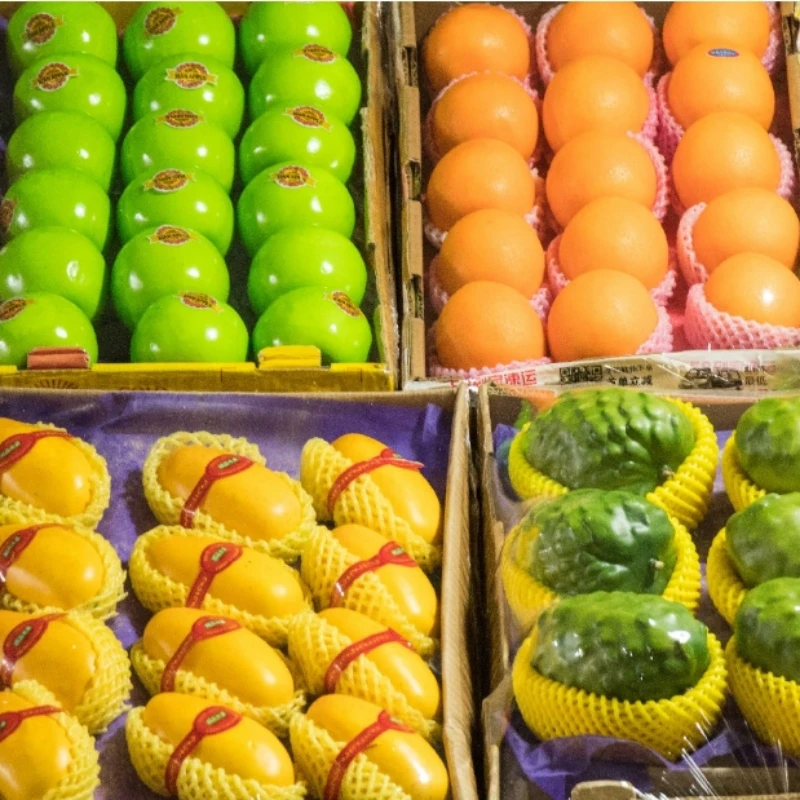
How Does Pullulan Compare To Other Polysaccharides Used In The Food Industry?
Pullulan is one of several polysaccharides used in the food industry, each with its unique properties and applications. To understand pullulan's distinct advantages, it's essential to compare it with other commonly used polysaccharides, such as starch, cellulose, pectin, and alginate.
Pullulan vs. Starch
Source and Structure:
Pullulan: Produced by the fungus Aureobasidium pullulans through fermentation, pullulan consists of maltotriose units linked by α-1,6-glycosidic bonds.
Starch: Derived from plants like corn, potatoes, and wheat, starch is composed of amylose and amylopectin, linked by α-1,4 and α-1,6-glycosidic bonds.
Film-Forming Ability:
Pullulan: Forms strong, transparent, and flexible films with excellent oxygen barrier properties.
Starch: Forms films that are often brittle and have inferior barrier properties compared to pullulan.
Applications:
Pullulan: Ideal for edible films, coatings, and capsules due to its superior film-forming properties and non-toxicity.
Starch: Commonly used as a thickening agent, stabilizer, and texturizer in a variety of foods.
Pullulan vs. Cellulose
Source and Structure:
Pullulan: A fungal polysaccharide, as mentioned earlier.
Cellulose: A plant-based polysaccharide composed of β-1,4-linked glucose units, primarily sourced from wood and cotton.
Solubility and Film Formation:
Pullulan: Soluble in water, creating films with excellent transparency and oxygen barrier properties.
Cellulose: Insoluble in water but can form derivatives like carboxymethyl cellulose (CMC) and hydroxypropyl methylcellulose (HPMC) that are water-soluble and film-forming.
Applications:
Pullulan: Used in edible films, dietary supplement capsules, and as a stabilizer in beverages.
Cellulose: Used as a thickener, emulsifier, and stabilizer in food products, and in low-calorie foods for its bulking properties.
Pullulan vs. Pectin
Source and Structure:
Pullulan: Fungal origin.
Pectin: Derived from the cell walls of fruits, primarily citrus and apples, composed of galacturonic acid units.
Gelation and Film Properties:
Pullulan: Does not gel but forms flexible films with good barrier properties.
Pectin: Known for its gelling properties, essential in making jams, jellies, and other gelled products.
Applications:
Pullulan: Used for its film-forming abilities and stability in supplements and coatings.
Pectin: Widely used in the food industry for gelling, thickening, and stabilizing purposes.
Pullulan vs. Alginate
Source and Structure:
Pullulan: Fungal origin.
Alginate: Extracted from brown seaweed, composed of mannuronic and guluronic acid units.
Film Formation and Stability:
Pullulan: Excellent film-forming properties with high flexibility and oxygen barrier capabilities.
Alginate: Forms strong films and gels in the presence of calcium ions, used for encapsulation and as a thickener.
Applications:
Pullulan: Used in edible films, capsules, and coatings.
Alginate: Commonly used in gels, as a stabilizer, and for encapsulating flavors and probiotics.
Unique Advantages of Pullulan
Pullulan offers several distinct advantages over other polysaccharides, making it particularly valuable in certain applications:
Superior Film-Forming Properties: Pullulan creates flexible, strong, and transparent films with excellent oxygen barrier properties, outperforming many other polysaccharides in this regard.
Non-Toxic and Biodegradable: It is safe for consumption and environmentally friendly, making it an ideal choice for edible packaging and coatings.
Versatility in Applications: Pullulan can be used in a wide range of food products, from coatings for fresh produce to capsules for dietary supplements, highlighting its adaptability and multifunctionality.
In summary, while pullulan shares some functional similarities with other polysaccharides, its unique properties, such as superior film formation, non-toxicity, and biodegradability, set it apart. These characteristics make pullulan an invaluable ingredient in the food industry, particularly for applications requiring high-quality edible films and coatings.
Are There Any Safety Concerns Or Side Effects Associated With Pullulan?
Pullulan is generally recognized as safe (GRAS) by regulatory authorities such as the U.S. Food and Drug Administration (FDA) and the European Food Safety Authority (EFSA). Extensive research and evaluations have confirmed its safety for consumption, but it is still important to consider potential safety concerns and side effects.
Safety Evaluations
Regulatory Status:
The FDA has granted pullulan GRAS status, indicating that it is considered safe for its intended use in food products.
The EFSA also recognizes pullulan as a safe food additive, supporting its use within specified limits in various food applications.
Toxicological Studies:
Numerous toxicological studies have been conducted to assess the safety of pullulan. These studies include acute toxicity, subchronic toxicity, and mutagenicity tests.
The results consistently demonstrate that pullulan is non-toxic and does not cause adverse effects at levels typically used in food products.
Potential Side Effects
While pullulan is safe for most people, some individuals might experience mild side effects, particularly if consumed in large quantities.
Digestive Discomfort:
As a prebiotic fiber, pullulan is not fully digested in the small intestine but instead ferments in the colon, promoting the growth of beneficial gut bacteria.
This fermentation process can produce gas, leading to symptoms such as bloating, flatulence, and mild digestive discomfort in some individuals.
These effects are generally mild and can be minimized by gradually introducing pullulan-containing products into the diet to allow the digestive system to adapt.
Allergic Reactions:
Although rare, allergic reactions to pullulan can occur. Individuals with known sensitivities to fungal-derived products should exercise caution.
Symptoms of an allergic reaction may include itching, rash, swelling, and difficulty breathing. If any of these symptoms occur, immediate medical attention is necessary.
Usage Guidelines
To ensure the safe consumption of pullulan, it is important to follow recommended usage guidelines.
Dietary Supplements:
Pullulan is commonly used in dietary supplements as an encapsulating agent. Consumers should adhere to the recommended dosage provided by the manufacturer to avoid excessive intake.
If taking multiple supplements containing pullulan, it is advisable to monitor the total intake to prevent digestive discomfort.
Food Products:
In food products, pullulan is typically used in small amounts as a coating or film-forming agent. The levels used in these applications are well within the safe consumption limits established by regulatory authorities.
Consumers should check product labels for pullulan content, especially if they have a known sensitivity or are prone to digestive issues.
Environmental Impact
Pullulan's biodegradability and non-toxic nature make it an environmentally friendly choice for food packaging and coatings. Unlike synthetic polymers, pullulan breaks down naturally without leaving harmful residues, contributing to sustainability efforts in the food industry.
Research and Monitoring
Continuous research and monitoring are essential to ensuring the ongoing safety of pullulan.
Ongoing Studies:
Researchers continue to study pullulan's properties and potential health effects to ensure its safety for consumption.
New applications and formulations involving pullulan are regularly evaluated to maintain safety standards.
Regulatory Oversight:
Regulatory bodies like the FDA and EFSA regularly review new data and research findings related to pullulan to update safety guidelines and recommendations as needed.
Manufacturers are required to comply with these guidelines to ensure the safe use of pullulan in food products.
Pullulan is widely recognized as a safe and beneficial food ingredient with numerous applications in the food industry. Its GRAS status, supported by extensive toxicological studies, confirms its safety for consumption. While some individuals may experience mild digestive discomfort or allergic reactions, these cases are rare and generally manageable.
By adhering to recommended usage guidelines and staying informed about ongoing research, consumers can confidently enjoy the benefits of pullulan in various food products and dietary supplements. Its safety profile, combined with its functional and environmental advantages, makes pullulan a valuable addition to the modern food industry.
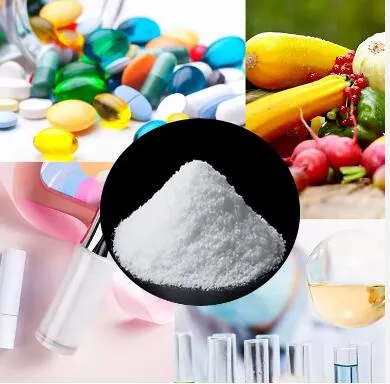
What Are The Environmental Benefits Of Using Pullulan In Food Packaging?
Pullulan, a polysaccharide produced by the fungus Aureobasidium pullulans, offers significant environmental benefits, particularly in the realm of food packaging. Its unique properties, such as biodegradability, non-toxicity, and excellent barrier capabilities, make pullulan an ideal candidate for sustainable packaging solutions. This FAQ explores the various environmental advantages of using pullulan in food packaging.
Biodegradability
One of the most significant environmental benefits of pullulan is its biodegradability.
Natural Breakdown:
Pullulan is a naturally occurring polysaccharide that can be broken down by microorganisms in the environment. This biodegradation process converts pullulan into water, carbon dioxide, and biomass, which are non-toxic and eco-friendly.
Unlike synthetic plastics that persist in the environment for hundreds of years, pullulan degrades relatively quickly, reducing the accumulation of waste in landfills and natural habitats.
Composting:
Pullulan-based packaging materials can be composted along with organic waste. Composting not only reduces the volume of waste sent to landfills but also generates nutrient-rich compost that can enhance soil health and support sustainable agriculture.
This attribute aligns with the principles of the circular economy, promoting the reuse and recycling of resources.
Reduced Reliance on Petroleum-Based Plastics
The use of pullulan in food packaging helps reduce the dependency on petroleum-based plastics, which have significant environmental drawbacks.
Non-Renewable Resources:
Traditional plastics are derived from non-renewable fossil fuels, the extraction and processing of which contribute to environmental degradation and greenhouse gas emissions.
Pullulan, on the other hand, is produced through the fermentation of renewable carbohydrate sources, such as starch and glucose, making it a more sustainable alternative.
Carbon Footprint:
The production and disposal of petroleum-based plastics generate substantial carbon emissions. In contrast, pullulan's production process has a lower carbon footprint, and its biodegradability ensures minimal environmental impact at the end of its life cycle.
Using pullulan-based packaging can significantly reduce the overall carbon footprint of food packaging operations.
Reduction of Plastic Pollution
Plastic pollution is a major global environmental issue, affecting marine and terrestrial ecosystems. Pullulan-based packaging can play a crucial role in mitigating this problem.
Microplastic Reduction:
Traditional plastics break down into microplastics, which persist in the environment and pose a threat to wildlife and human health. Pullulan, being biodegradable, does not contribute to the formation of microplastics.
By replacing conventional plastics with pullulan-based materials, we can reduce the influx of microplastics into oceans, rivers, and soils.
Wildlife Protection:
Plastic waste poses significant risks to wildlife, including ingestion, entanglement, and habitat disruption. Pullulan's biodegradability ensures that it does not accumulate in the environment, thereby reducing the hazards posed to animals.
Sustainable packaging solutions using pullulan help protect biodiversity and maintain ecological balance.
Energy Efficiency
The production and processing of pullulan are generally more energy-efficient compared to traditional plastic manufacturing.
Lower Energy Consumption:
Fermentation processes used to produce pullulan require less energy compared to the extraction and polymerization processes involved in plastic production.
This lower energy requirement translates to reduced greenhouse gas emissions and a smaller environmental footprint.
Renewable Energy Integration:
Pullulan production facilities can integrate renewable energy sources, such as solar or wind power, further enhancing the sustainability of the production process.
This approach aligns with global efforts to transition to renewable energy and reduce reliance on fossil fuels.
Innovation and Future Prospects
Pullulan's environmental benefits extend beyond its current applications, as ongoing research and innovation continue to uncover new possibilities for sustainable packaging.
Advanced Biodegradable Materials:
Researchers are exploring the development of composite materials combining pullulan with other biodegradable polymers to enhance functionality and environmental benefits.
These advanced materials can offer improved mechanical properties, extended shelf life, and additional environmental advantages.
Nanotechnology:
Integrating nanotechnology with pullulan-based packaging can lead to innovative solutions with superior barrier properties and active functionalities, such as antimicrobial and antioxidant effects.
These advancements can further reduce food waste and enhance the sustainability of food packaging.
Pullulan offers numerous environmental benefits, making it a valuable ingredient in the quest for sustainable food packaging solutions. Its biodegradability, reduced reliance on petroleum-based plastics, and lower carbon footprint contribute to mitigating the environmental impact of food packaging. Additionally, pullulan-based materials help address the pressing issue of plastic pollution and support wildlife protection.
As research and innovation continue to advance, the potential for pullulan to drive sustainability in the food industry will only grow. By embracing pullulan and other eco-friendly alternatives, the food industry can play a pivotal role in promoting environmental stewardship and fostering a more sustainable future.
Conclusion
Pullulan is a versatile and valuable polysaccharide with numerous applications in the food industry. From extending the shelf life of fresh produce to enhancing the stability of dietary supplements, pullulan’s unique properties make it an indispensable ingredient. Its benefits extend beyond preservation, contributing to nutritional and health advantages such as prebiotic effects and blood sugar management.
As research continues to uncover new uses and benefits, the role of pullulan in the food industry is set to expand further. This biodegradable and non-toxic polymer not only addresses the demand for sustainable food packaging but also offers innovative solutions for improving the quality and safety of food products. By incorporating pullulan into various food applications, we can look forward to a future where food is not only more sustainable but also healthier and more enjoyable.
If you need anything, please feel free to contact us.
525556.webp)
